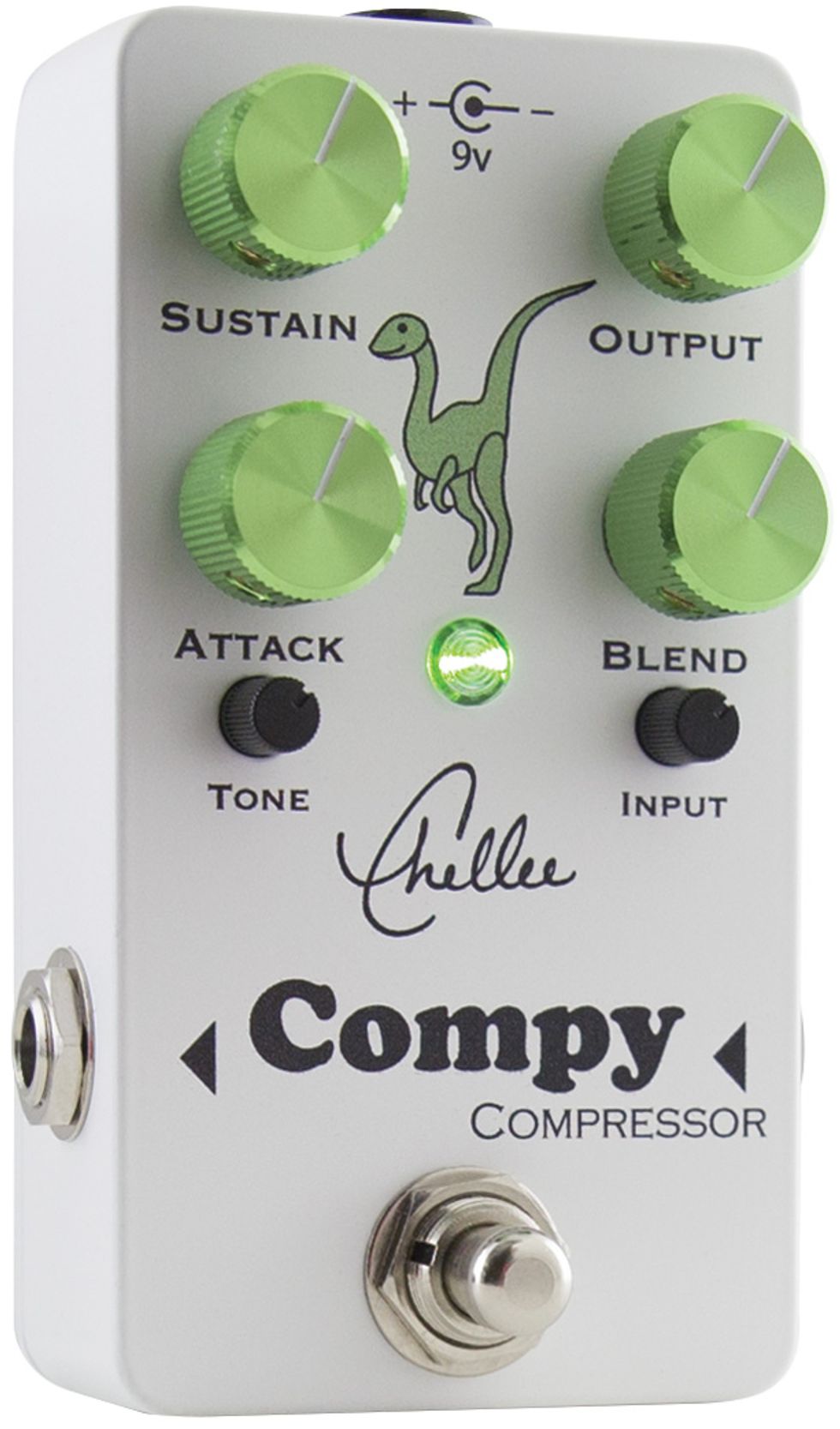“Most stompboxes are based on the same handful of circuits” is an oft-heard half-truth about guitar effects. On one hand, it’s a gross exaggeration. There are a lot of circuits out there! Yet in some effect categories, one design predominates to the exclusion of others. For example, something like nine out of 10 overdrive pedals derive from the basic topology of the Tube Screamer.
With boutique compressor pedals, the homogeneity may be even greater. Most stomp comps are based on the same OTA (operational transconductance amplifier) design used by two very similar 1970s pedals: the Ross Compressor and the MXR Dyna Comp. Yeah, there are a couple of models derived from Dan Armstrong’s Orange Squeezer, plus some pricier options that mimic such studio-grade compressors as the Urei 1176. But as a rule, if it’s a boutique compressor pedal, it’s probably a Dyna Comp variant.
Variations on a Theme
Yet not all boutique compressor pedals are identical. The original Ross/MXR pedals had two knobs: one for compression amount, and one to set the output. But over the years crafty designers have expanded the circuit’s options with added controls.
Chellee’s Compy compressor doesn’t exactly break new ground in this regard, but it adds four of the hippest modifications. Also, it sells for $169—a phenomenal price for a handmade-in-the-U.S.A. pedal with a nice through-hole build. At its heart is the usual LM13700 OTA chip (the modern replacement for the CA3080s used in the ’70s). Compy’s circuit also includes a voltage doubler, so it runs at 18V for extra headroom, even though you power it with standard 9V supplies. (There is no battery compartment.)
Green Machine
Compy’s controls include four standard pots with bright green knobs plus two mini-pots. The topmost knobs are traditional sustain and output controls. The other four knobs are welcome additions. The attack control delays the onset of compression, which can make playing sound more dynamic. Set correctly, it preserves note transients and can add a nice, pulsing groove to your parts. Also useful is the blend control, which mixes your dry and compressed signals. For example, you could dial in extreme compression, maximizing dynamic consistency and sustain, but mix in some dry signal for a more naturalistic effect than you’d ever get from a Dyna Comp.
The treble-nixing tone control is another handy addition. Its range and taper are perfect for taming prickly highs. The final control is probably the most unusual. Most simple compressor designs lack separate input level and compression amount controls—higher input level equals more compression. Here, though, there’s a dedicated input pot. At high settings, tones get thicker and woolier. At lower settings, they’re clear and open.
Ratings
Pros:Classic Dyna Comp sound. Excellent build. All the cool mods. Compact for a six-knob pedal. Great price.
Cons:
No battery compartment.
Tones:
Ease of Use:
Build/Design:
Value:
Street:
$169
Chellee Compy
chellee.com
These added options expand on the original circuit’s range and are especially useful for subtler settings. There’s a lot packed into this standard B-sized stompbox. Compy also has a nice soft-touch relay footswitch.
Each of the two demo clips begins with a short, dry recording, which I then re-amped through varying Compy settings.
Squeeze Suggestions
Not that you asked, but here’s a handy technique for dialing in the Compy’s compression. Start with an extreme setting: maximum sustain, the fastest possible attack, and a 100-percent-wet blend. Your tone will suck—literally! Note attacks are squashed flat, and you hear a pumping/sucking effect as your notes decay. But just go with it.
Next, ease back the attack control. You’ll start hearing a little pop of note attack before the compression kicks in. Focus not on the tone, but the rhythm—find a spot where the pumping starts to move in time with your part. It’s a feel thing; find the groove.
Now keep the attack setting, but lower the sustain control. How low can you go and still feel the compressor’s groove? (Toggle the effect on and off frequently for comparison.) Alternately, add more dry signal to the mix. Your ideal setting might be any combination of attack and blend knob positions. Likewise, try different combinations of the highly interactive sustain and input controls. Finally, set the tone control to taste and output level as needed.
The Verdict
There are many compressor pedals based on the MXR/Ross template, but Compy, with its compact footprint and expanded range, is an especially appealing choice. Better still, its $169 price tag is exceptionally fair for a quality pedal handbuilt in the U.S.








![Rig Rundown: Russian Circles’ Mike Sullivan [2025]](https://www.premierguitar.com/media-library/youtube.jpg?id=62303631&width=1245&height=700&quality=70&coordinates=0%2C0%2C0%2C0)

















